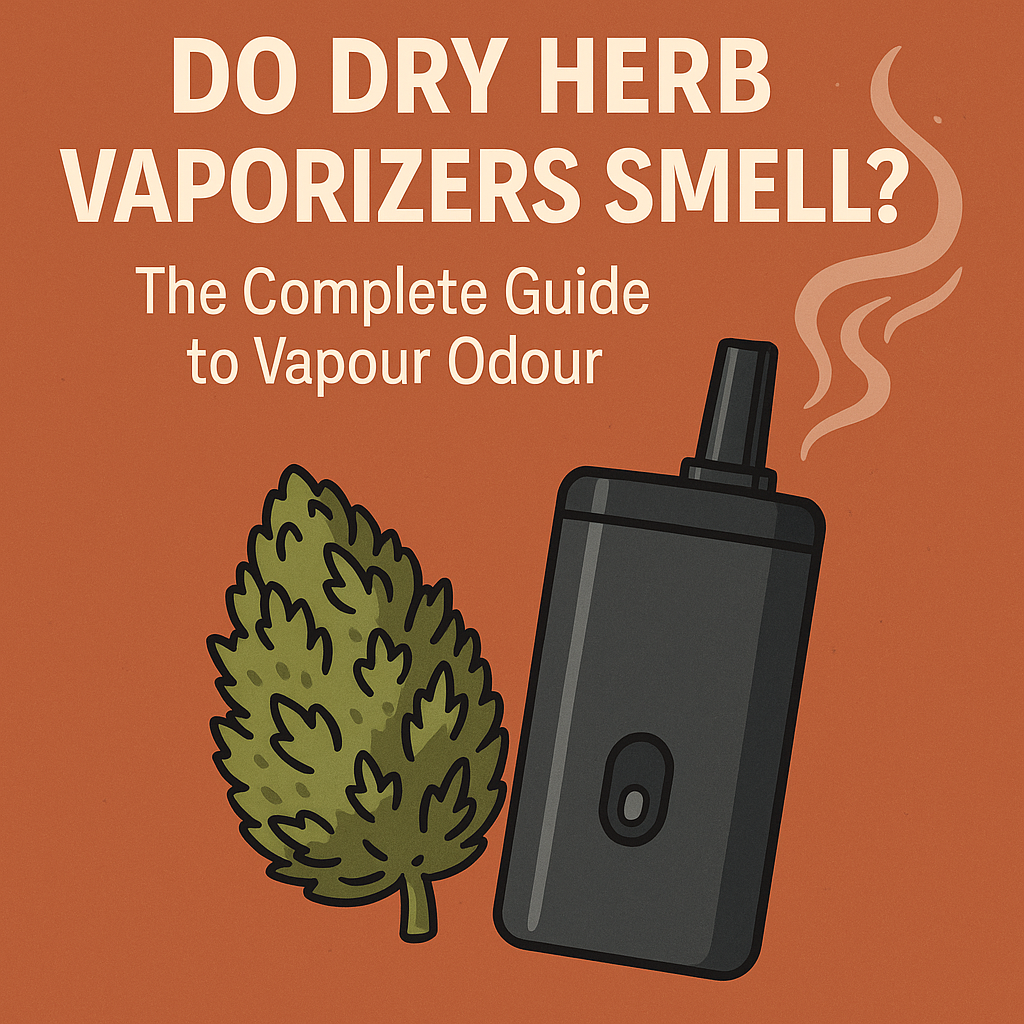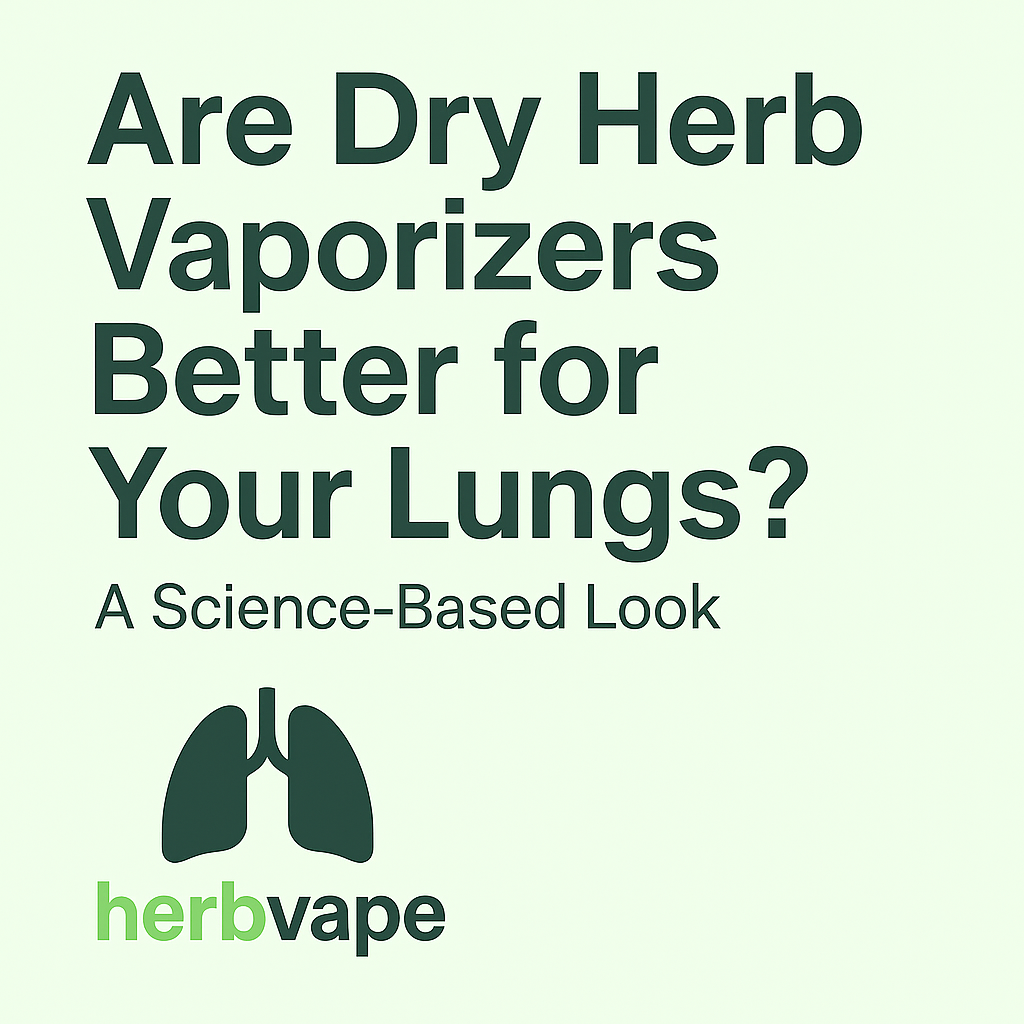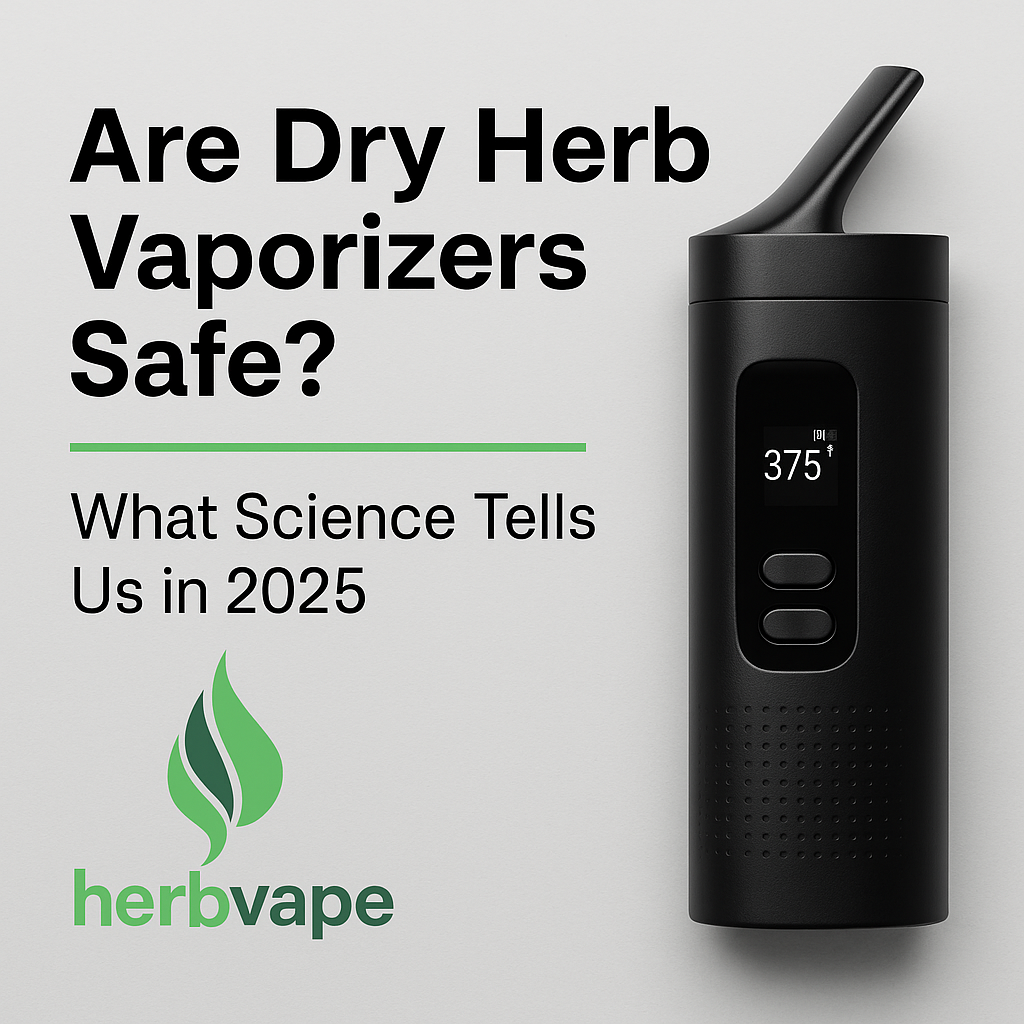Are Dry Herb Vaporizers Safe? What Science Tells Us in 2025
Over the past decade, dry herb vaporizers have surged in popularity as alternatives to traditional smoking methods. These devices, which heat cannabis or other herbs without combustion, promise a "cleaner" experience with better flavour and potentially fewer health risks. But do they deliver on these claims? Let's examine what current research tells us about the safety of dry herb vaporizers and how to choose devices that prioritize your wellbeing.
The Science Behind Vaporization vs. Combustion
Understanding why vaporizers might be safer starts with understanding how they work differently from smoking. Traditional combustion burns plant material at temperatures exceeding 450°F (232°C), creating smoke filled with tar, carbon monoxide, and numerous toxic compounds. Dry herb vaporizers, by contrast, heat material to precise temperatures between 300-450°F (149-232°C), releasing active compounds as vapor without combustion.
Multiple scientific studies have found that properly functioning dry herb vaporizers produce significantly fewer harmful toxins compared to smoking. A landmark 2006 study published in the Journal of Pharmacology and Experimental Therapeutics demonstrated that the Volcano vaporizer effectively delivered active compounds while drastically reducing harmful byproducts like carbon monoxide and tar that are typically produced during combustion. Dry Herb Vaporizers & Health: ✔ 6 Scientific Studies - Planet of the Vapes
This foundational research helped establish vaporization as a legitimate harm reduction approach, leading to broader adoption among both recreational and medical users seeking alternatives to smoking.
Real-World Health Benefits: What Users Experience
The laboratory findings translate to measurable improvements in user experience and health markers. Research published in the Harm Reduction Journal (2007) found that cannabis users who switched from smoking to vaporizing reported fewer respiratory symptoms including coughing, wheezing, and phlegm production. Dry Herb Vaporizers & Health: ✔ 6 Scientific Studies - Planet of the Vapes
Additional studies have reinforced these findings:
- A 2016 PLOS ONE study tested five different vaporizers and found they successfully released active compounds with minimal harmful byproducts like benzene or toluene. Dry Herb Vaporizers & Health: ✔ 6 Scientific Studies - Planet of the Vapes
- Respiratory inflammation markers in vaporizer users showed levels closer to non-users than to smokers
- Users consistently report improved taste, reduced throat irritation, and better overall respiratory comfort
These benefits help explain why devices like the Mighty+ vaporizer and Crafty+ portable vaporizer have gained medical device certifications in several regions—a testament to their safety and effectiveness profiles.
Temperature Control: The Key to Safe Vaping
One of the most critical factors in vaporizer safety is precise temperature control. Setting your vaporizer too high can produce harmful chemicals like benzene, albeit in smaller quantities than smoking does. Most experts recommend vaping between 350°F-390°F (175°C-200°C) to maximise benefits while minimising potential risks. Is Dry Herb Vaping Safe? Dry Herb Vaporizer Health Risks
Different temperature ranges offer distinct experiences:
- Low temps (315-350°F/157-177°C): Maximum flavor, minimal vapor, gentle effects
- Medium temps (350-390°F/177-199°C): Balanced flavor and effects, moderate vapor production
- High temps (390-430°F/199-221°C): Dense vapor, stronger effects, potentially harsher
Premium devices like the Solo 3 vaporizer offer precise degree-by-degree temperature control, allowing users to find their optimal settings for both safety and effectiveness. This level of control simply isn't possible with combustion methods.
Device Quality: Why Your Choice Matters
The safety profile of a dry herb vaporizer can vary dramatically based on its quality and materials. Since the vaporizer market isn't uniformly regulated, product safety and efficacy can be inconsistent. Low-quality devices may contain problematic materials that release toxins when heated. Dry Herb Vaporizer Health Risks
When evaluating vaporizer safety, consider these crucial factors:
Materials in the Vapor Path
The safest vaporizers use medical-grade materials where vapor travels:
- Borosilicate glass (as found in Arizer Solo series)
- Medical-grade ceramics
- High-quality stainless steel
- Avoid devices with plastic components in the airpath
Heating Technology
Different heating methods offer varying safety profiles:
- Convection heating (like in the Tinymight 2) heats air that passes through herbs, providing even extraction
- Conduction heating involves direct contact with heated surfaces
- Hybrid systems (found in devices like the Storz & Bickel Venty) combine both methods for optimal efficiency
Manufacturer Reputation
Established manufacturers with medical device experience, like Storz & Bickel and Arizer, typically maintain higher safety standards due to their clinical partnerships and regulatory oversight.
Potential Risks and Realistic Limitations
While vaporizing appears significantly safer than smoking, it's important to acknowledge potential risks and limitations:
Respiratory issues can still occur with vaporizer use. Some users report throat soreness, irritation, and dryness. For those with existing respiratory conditions, vaporizer use may potentially worsen these conditions. Dry Herb Vaporizer Health Risks
Common concerns include:
- Respiratory sensitivity: Some users experience throat or lung irritation, especially at higher temperatures
- Device dependence: Poor-quality devices may off-gas harmful substances
- User technique: Improper use (like overheating) can create unwanted compounds
Additionally, there are currently no comprehensive long-term studies evaluating the safety of dry herb vaporizers. As this technology is relatively new in widespread use, research is still catching up to provide a complete picture of long-term effects. Are Dry Herb Vapes Safer Than Smoke Over Water? - MedWell Health and Wellness Centers
Avoiding Common Vaping Misconceptions
It's crucial to distinguish between different types of vaporizers when discussing safety. The serious health concerns that emerged in 2019, including cases of EVALI (e-cigarette or vaping product use-associated lung injury), were primarily linked to vitamin E acetate and other additives found in some cannabis oil cartridges—not dry herb vaporizers. Are Dry Herb Vapes Safer Than Smoke Over Water? - MedWell Health and Wellness Centers
Dry herb vaporizers use actual plant material rather than extracted oils or synthetic additives, eliminating many risks associated with:
- Vitamin E acetate
- Propylene glycol
- Artificial flavourings
- Cutting agents
- Contaminated cartridges
This is why many experienced users prefer devices like the PAX Plus or XMAX Starry 4, which are designed specifically for dry herbs rather than concentrates or oils.
Best Practices for Safer Vaping
To maximize safety when using dry herb vaporizers:
Device Selection
- Invest in quality: Choose reputable manufacturers with safety certifications
- Check materials: Ensure vapor path components are medical-grade
- Read reviews: Look for long-term user experiences and safety reports
- Consider warranties: Longer warranties often indicate manufacturer confidence in safety and durability
Usage Guidelines
- Start low, go slow: Begin with lower temperatures and gradually increase as needed
- Keep it clean: Regular maintenance prevents residue buildup that could affect safety
- Use quality herbs: Contaminated or improperly cured material can introduce additional risks
- Stay hydrated: Vaporization can cause dry mouth and throat
Health Monitoring
If you have existing health concerns, particularly respiratory conditions, consult with a healthcare professional before using any vaporization device. Dry Herb Vaporizer Health Risks and Benefits: What You Need to Know | NuggMD Monitor your body's response and discontinue use if you experience persistent irritation or respiratory symptoms.
The Future of Vaporizer Safety Research
As the vaporizer market matures, we're seeing increased interest from medical researchers and regulatory bodies. Current trends include:
- Long-term studies tracking vaporizer users over multiple years
- Standardized testing protocols for device safety
- Medical device certifications for therapeutic applications
- Improved materials science reducing potential off-gassing
Manufacturers are responding with innovations like the medical-grade materials used in devices such as the Crafty+ medical vaporizer, which carries certifications in several countries for medical use.
Making an Informed Decision
When considering whether to use a dry herb vaporizer, weigh these evidence-based factors:
Potential Benefits:
- Significant reduction in harmful combustion byproducts
- Better flavor and aroma preservation
- More efficient herb usage
- Precise temperature control
- Reduced respiratory irritation compared to smoking
Considerations:
- Initial investment in quality equipment
- Learning curve for optimal usage
- Limited long-term safety data
- Individual sensitivity variations
Who Might Benefit Most:
- Current smokers seeking harm reduction
- Medical users requiring consistent dosing
- Users prioritizing flavor and efficiency
- Those with mild respiratory sensitivities to smoke
Choosing the Right Device for Safety
Different users have different safety priorities. Here are some considerations:
For beginners: Devices like the Solo 2 vaporizer offer foolproof operation with all-glass vapor paths and excellent safety records.
For medical users: The Mighty+ medical vaporizer provides medical-grade reliability with precise dosing capabilities.
For portable use: The ArGo portable vaporizer combines safety with true portability, featuring protective glass stems and precise temperature control.
For advanced users: The Tinymight 2 vaporizer offers maximum customization with on-demand heating and artisan-grade materials.
The Bottom Line
Current evidence suggests that quality dry herb vaporizers likely present significantly fewer health risks than combustion methods like smoking. The reduction in harmful byproducts is well-documented across multiple peer-reviewed studies, and user reports consistently indicate improved respiratory comfort.
However, "safer than smoking" doesn't necessarily mean "completely safe." As research continues to evolve, users should approach vaporizer use with informed caution. More studies are needed to fully understand the long-term effects of regular dry herb vaporizer use, particularly as the technology continues to develop and change. Dry Herb Vaporizer Health Risks and Benefits: What You Need to Know | NuggMD
For those who choose to consume herbs like cannabis, a quality dry herb vaporizer used at appropriate temperatures currently appears to be one of the least harmful methods available. The key is choosing reputable devices, using them properly, and staying informed as research continues to develop.
By prioritizing device quality, proper technique, and ongoing health monitoring, users can maximize the potential benefits while minimizing risks. As the science continues to evolve, vaporizer technology will likely become even safer and more effective, making this an exciting time for those interested in harm reduction approaches to herbal consumption.
Always consult with healthcare professionals if you have specific health concerns or conditions that might be affected by vaporizer use. This article is for informational purposes and should not be considered medical advice.















Leave a comment
This site is protected by hCaptcha and the hCaptcha Privacy Policy and Terms of Service apply.